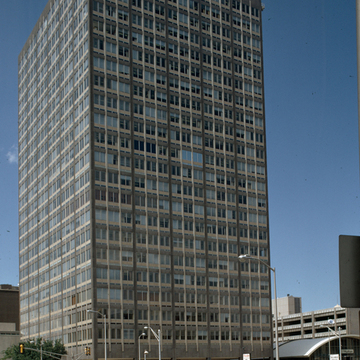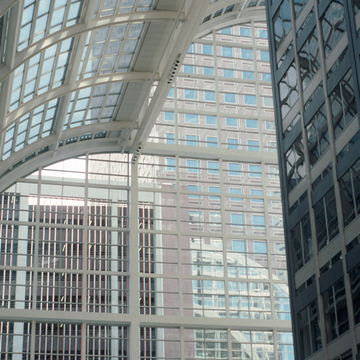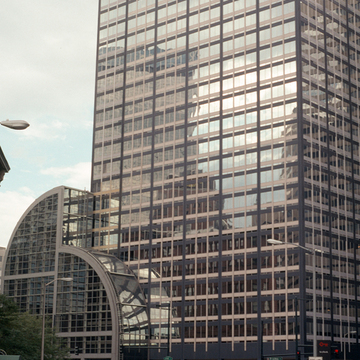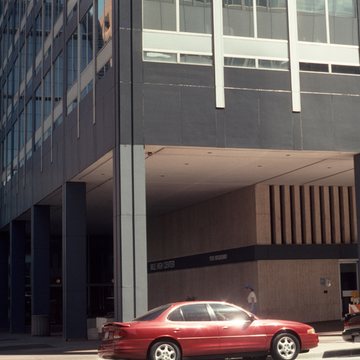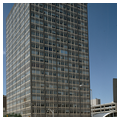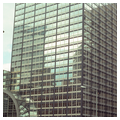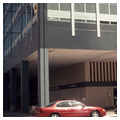You are here
Norwest Bank Center (Mile High Center)
Denver's most conspicuous skyscraper is the 1981 addition to this center, the “cash register” with its arc top, a fifty-two-story shrine to money. It is part of a complex of related structures that occupies three city blocks along East 17th Avenue at the base of the tower. The core is I. M. Pei's Mile High Center at 1700 Broadway, the site of the mansion that housed Capitol Hill developer Henry C. Brown and, later, silver king Horace A. W. Tabor. Developer William Zeckendorf originally complained that Pei “wasted” space on an exhibition hall, plaza, fountains, pools, and shops, but later complimented Pei: “You've doubled the equity.” Pei's corner tower features interwoven vertical and horizontal panels. Those covering columns and spandrel beams are dark gray cast aluminum, while panels hiding heating and cooling conduits are off-white porcelain enamel. Pei did much of the design work himself on one of the first of his high-rise commissions.
Pei's barrel-vaulted roofs have been replaced by glazed framed arches that connect the buildings and echo the beak in Philip Johnson's taller structure to the east. The new construction presses setbacks to the limit, sacrificing pedestrian comfort and scale for profitability and impressive size. Inside, an airy, fourteen-story atrium soars above a bar, restaurant, trees, and even some in-house sparrows. The interior is finished in opulent materials such as imported marble and onyx. Especially lavish are the various marble claddings used to customize the bank of elevators in the Neo-Renaissance great hall. The glass atrium arcs at the base mirror the arc at the top, which dropped accumulated snow and ice on the sidewalks below before heating coils were installed.
Writing Credits
If SAH Archipedia has been useful to you, please consider supporting it.
SAH Archipedia tells the story of the United States through its buildings, landscapes, and cities. This freely available resource empowers the public with authoritative knowledge that deepens their understanding and appreciation of the built environment. But the Society of Architectural Historians, which created SAH Archipedia with University of Virginia Press, needs your support to maintain the high-caliber research, writing, photography, cartography, editing, design, and programming that make SAH Archipedia a trusted online resource available to all who value the history of place, heritage tourism, and learning.












